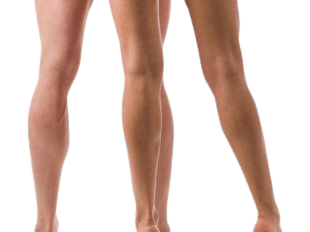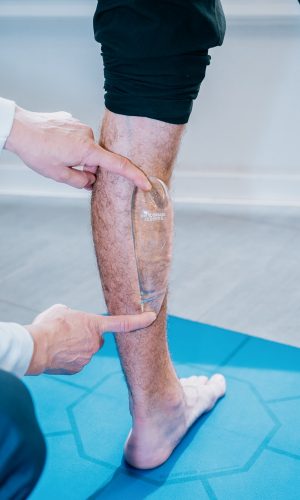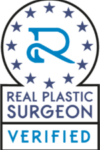
Calf implants seek to remodelate the shape of the leg, specially the inner aspect. We look for a curve and volume similar to what you could get with muscular work out.
Patients seek calf implants to define the lower leg if it cannot be achieved by exercise alone, or to correct a muscle imbalance resulting from physical or birth defects . We can correct the volume and the look of a leg affected by poliomyelitis or talipes echinovarus.
Its great advantages are:
Fat grafting can be option to reshape the leg, but it does not give any projection and there is a risk of losing some volume in the long run, due to the natural changes in weight. This is why we prefer implants to give volume and contour. We use fat transfer to provide a better contour and to give some volume to the lower third of the leg and ankle. The lower third of the leg cannot be treated with calf implants.
In some patients, we can balance the thigh as well by placing an implant under the gracilis muscle or using fat grafting, in order to correct the hollowness of the inner thigh.

After the operation, the most common thing is to spend the night in the clinic and return home the next day.
It is necessary to rest for a couple of days, and restart work activity in 4-7 days.
It is common to notice changes in sensitivity in the treated area, as well as the appearance of bruises and swelling in the feet and legs, which will disappear in a few weeks.
Gymnastics or other exercise involving intense activity of the calves should not be practiced during six weeks following the intervention. By doing so, a scar called capsule is produced by the body and isolate the prosthesis, which becomes fixed and not move.
The scar may remain red for months and sometimes hyperpigmented.
EXCELENTEA base de 352 reseñas Trustindex verifica que la fuente original de la reseña sea Google.
Trustindex verifica que la fuente original de la reseña sea Google. Laura RobertMaravillosa experiencia con la Doctora Salvador!!!Trustindex verifica que la fuente original de la reseña sea Google.
Laura RobertMaravillosa experiencia con la Doctora Salvador!!!Trustindex verifica que la fuente original de la reseña sea Google. Loreto GinerEstic encantada! Son els millors!Trustindex verifica que la fuente original de la reseña sea Google.
Loreto GinerEstic encantada! Son els millors!Trustindex verifica que la fuente original de la reseña sea Google. Alessandro Garrido CorcheroMuy profesionales. El trato es atento y cercano. Los resultados óptimos. He quedado muy satisfecho, los recomiendo totalmente.Trustindex verifica que la fuente original de la reseña sea Google.
Alessandro Garrido CorcheroMuy profesionales. El trato es atento y cercano. Los resultados óptimos. He quedado muy satisfecho, los recomiendo totalmente.Trustindex verifica que la fuente original de la reseña sea Google. Lanochka LerinaEs la mejor clínica. Yo fue operado por el Dr. Benito. Durante mucho tiempo elegí una clínica y un médico, dudé. Pero tuve mucha suerte, ¡caí en manos de oro! Estoy muy contenta con el resultado inmejorable. El doctor es un especialista muy atento y elegante. Todo el personal de la clínica es muy agradable. ????????✨????Trustindex verifica que la fuente original de la reseña sea Google.
Lanochka LerinaEs la mejor clínica. Yo fue operado por el Dr. Benito. Durante mucho tiempo elegí una clínica y un médico, dudé. Pero tuve mucha suerte, ¡caí en manos de oro! Estoy muy contenta con el resultado inmejorable. El doctor es un especialista muy atento y elegante. Todo el personal de la clínica es muy agradable. ????????✨????Trustindex verifica que la fuente original de la reseña sea Google. AliasMuy buena clínica, la doctora Salvador explica todo de manera que sabes que estas en buenas manos.Trustindex verifica que la fuente original de la reseña sea Google.
AliasMuy buena clínica, la doctora Salvador explica todo de manera que sabes que estas en buenas manos.Trustindex verifica que la fuente original de la reseña sea Google. iliane emEspectacular resultado gracias al dr.benito y a su equipo????Trustindex verifica que la fuente original de la reseña sea Google.
iliane emEspectacular resultado gracias al dr.benito y a su equipo????Trustindex verifica que la fuente original de la reseña sea Google. María SalustiaHace más de 15 años que confío en el doctor Jesús Benito. Un gran cirujano y una persona encantadora. Gracias por todos los cuidados !!!!Trustindex verifica que la fuente original de la reseña sea Google.
María SalustiaHace más de 15 años que confío en el doctor Jesús Benito. Un gran cirujano y una persona encantadora. Gracias por todos los cuidados !!!!Trustindex verifica que la fuente original de la reseña sea Google. Jlcortacans1970 YoMuy agradecido al Dr Benito por la confianza que se gana y que te ayuda a tomar decisiones. Muy satisfecho con su profesionalidad y los resultados. Y muy contento con su equipo por lo cómodo y fácil que te hacen todo.
Jlcortacans1970 YoMuy agradecido al Dr Benito por la confianza que se gana y que te ayuda a tomar decisiones. Muy satisfecho con su profesionalidad y los resultados. Y muy contento con su equipo por lo cómodo y fácil que te hacen todo.
He worked at the Hospital Clínic in Barcelona as a specialist in Plastic and Reconstructive Surgery for 16 years.
Fifteen years ago, together with two other professionals, he founded Antiaging Group Barcelona, at the forefront of Aesthetic Medicine and Surgery. He has developed professionally in the field of care, research and teaching, being his fields of interest facial surgery, breast surgery and body contouring with implants.
In breast surgery he is a specialist in transaxillary breast augmentation and secondary breast surgery. He has introduced the use of ultrasound in Plastic Surgery and recently the use of 3D implants in thoracic malformations.
Calf augmentation is indicated for those persons who:
Semi-solid, fusiform and non-rigid calf implants are used under the gastrocnemius muscle. Before, we placed them over the muscle, under the fascia, but in this position they can be seen in the long term. In patients with severe atrophy, the technique may be different.
Under the muscle the implant is simply not seen and the look is absolutely natural.
In severe cases where we have a great atrophy, we have to do two stages. In the first stage we create the space by using a tissue expander. This is like a balloon that is inflated progressively until we have the space and volume needed. At the second stage, the expander is withdrawn and substituted by the definitive silicone implants. In these cases, implants are much bigger (350-400 cc)
The incision is located in the crease at the back of the knee. Alternatively, autologous fat obtained by liposuction and treated with the Coleman system can be used to fill the area. The fat gives a good contour but does not give projection. To achieve projection to the muscle and increase by 2-3 cm, the prosthesis is a much better method. Fat transfer, however, is very useful for the lower third of the leg and ankle, since the implant cannot be placed in these areas.
It is performed with local anesthesia and sedation, epidural, or general anesthesia, as appropriate
Medical Quality







Follow us